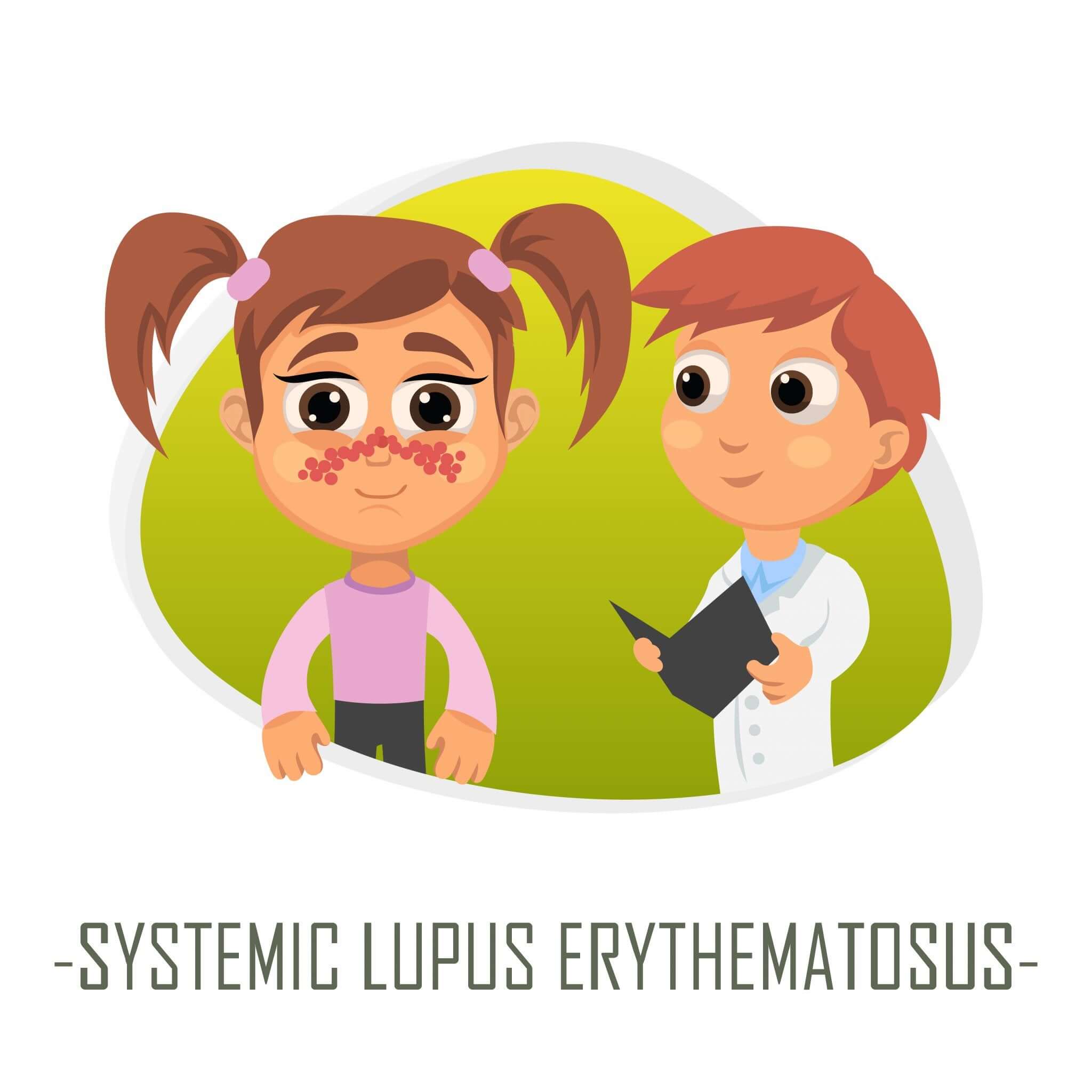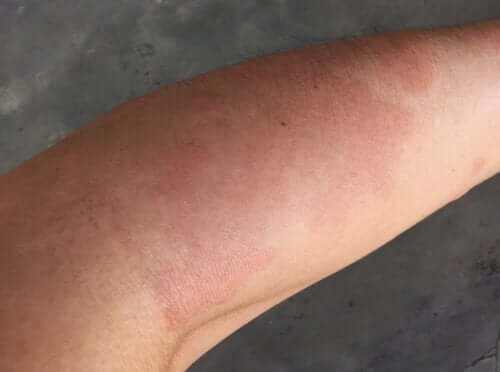Systemic Lupus Erythematosus in Children

Systemic lupus erythematosus (SLE) is an autoimmune disease that may affect different organs in the body, and presents several multisystemic manifestations. Even though researchers have studied this disease, its cause is still unknown.
What is systemic lupus erythematosus in children?
SLE is a chronic autoimmune disease that presents different complex symptoms. At the beginning, it may appear suddenly as an acute medical condition that can affect many organs. Its symptoms may be sporadic. Among them, we may find high fever, physical discomfort, exanthema or arthritis.
On the other hand, according to information gathered from the Hospital of Pediatrics Garrahan, from Buenos Aires, Argentine, 25% of lupus cases appear during childhood. It usually happens when children are between 11 and 15 years old. And, only 5 % of the cases appear before children are 5 years old.
However, systemic lupus erythematosus in children may appear at any age, but the peak age of incidence is when they’re 12 years old.
Clinical manifestations
Clinical manifestations vary according to the patient, and they may affect different organs. In the case of children, symptoms tend to be more severe than in the case of adults. They also appear in different stages, which we’ll explain next:

General symptoms
At first, you may notice symptoms, such as fever, physical discomfort or weight loss. Then, you may find more severe symptoms that can put the child’s life in danger.
Cutaneous manifestations of systemic lupus erythematosus
Cutaneous manifestations are the most common symptoms of this disease. In this case, you may find malar erythema, mouth ulcers and vasculitis rash, photosensitivity, hair loss, discoid lesions and Raynaud syndrome. As we’ve mentioned before, symptoms can vary according to the different patients.
Musculoskeletal manifestations of systemic lupus erythematosus
During childhood, arthritis is one of the most common symptoms of SLE. Usually, it appears as symmetric polyarthritis, which can be quite painful, and may affect large and small joints.
Cardiac manifestations
Both children and adults have the same cardiac manifestations. Among the most common ones, you’ll find pericarditis, myocarditis, heart valve disease and coronary heart disease and atherosclerosis.
Neuropsychiatric manifestations of systemic lupus erythematosus
Other manifestations of this disease are central nervous system infections. However, manifestations may be less severe, such as headaches or memory loss.
Pulmonary manifestations
Pulmonary manifestations can be mild or more severe. The most common one is pleuritis, and sometimes, there may be cases of pneumonitis, pneumonia, pneumothorax, interstitial lung disease, pulmonary hypertension and pulmonary hemorrhage.
Renal manifestations
This is usually the most common symptom and the one that usually leads to diagnosis. According to the Spanish Association of Pediatrics, 80% of the patients that have renal manifestations will develop them during the first year.

Other manifestations of systemic lupus erythematosus
Among the different manifestations, you may find gastrointestinal problems, such as peritonitis, esophagus dysfunctions and colitis. In addition, you can find eye disorders, such as exudates, papilledema, retinopathy, among others.
Treatment
Treatment in children and adults is quite complex, because the cause of this disease hasn’t been identified yet. In addition, it presents many different manifestations, according to each patient. Therefore, there’s no specific therapy for all the cases. Depending on each case, these are some general recommendations:
- Children should rest and avoid stressful situations.
- Exercise prevents fatigue and muscle weakness. However, they should do it once the acute outbreak has passed.
- Patients who suffer from photosensitivity shouldn’t be exposed to the sun.
- Treatment should relate directly to the manifestation the child presents.
On the other hand, pharmacological treatment will depend on the symptoms and manifestations of the disease. Additionally, a specialist will be in charge of prescribing the correspondent medication. Among the possible treatments you’ll find:
- Non-steroidal anti-inflammatory.
- Antimalarial.
- Corticosteroids.
- Immunosuppressive.
- Cyclophosphamide.
- Azathioprine.
- Methotrexate.
In conclusion, systemic lupus erythematosus in children is a serious disease. Therefore, early diagnosis will allow specialists to identify the different manifestations, and choose the proper treatment.
All cited sources were thoroughly reviewed by our team to ensure their quality, reliability, currency, and validity. The bibliography of this article was considered reliable and of academic or scientific accuracy.
- Ramírez, G., Abril, R. B., Bolaño, N. D., Gamarra, G., & Uribe, B. I. (1998). Lupus eritematoso sistémico. ASCOFAME.
- Ramírez, L., Builes, C., Amaya, C., Palacio, C., Felipe, O., & Uribe, O. (1998). Lupus eritomatoso sistémico en niños. Rev. colomb. reumatol, 5(1), 11-7.
- Tavares, A., & Rial, M. (2005). Vacunación en pacientes con lupus eritematoso sistémico. Revista Española de Reumatología, 32(2), 60-63.